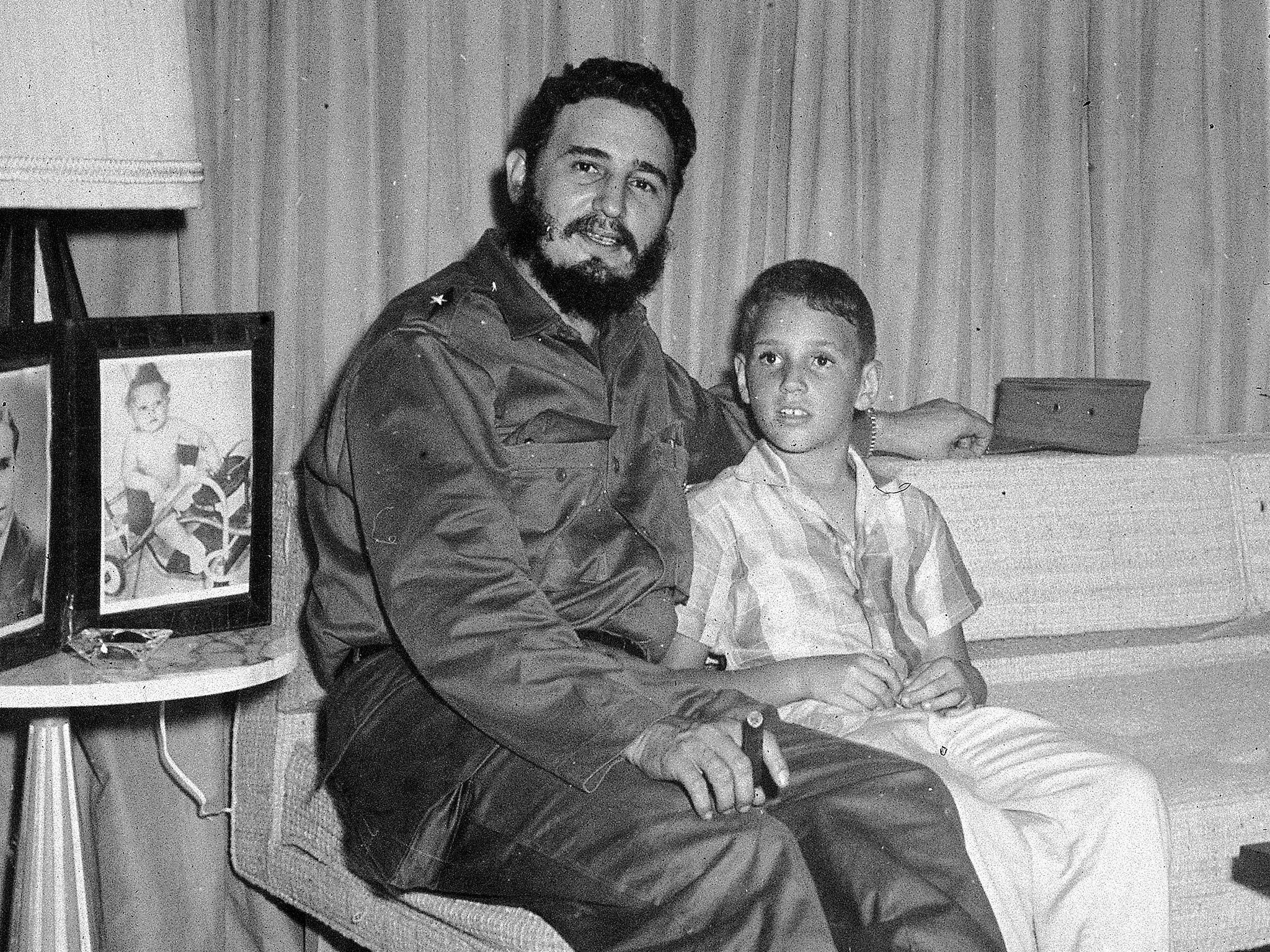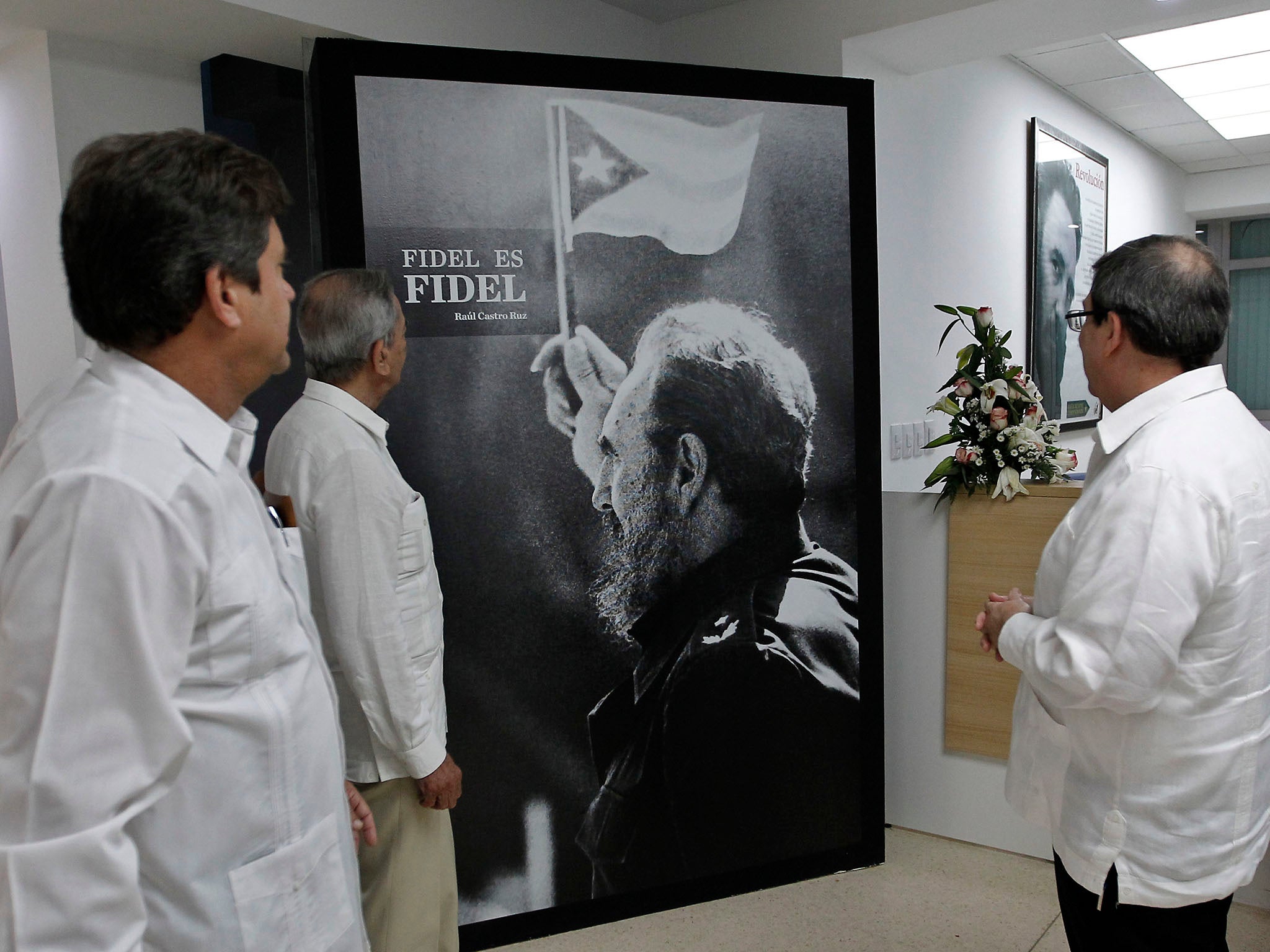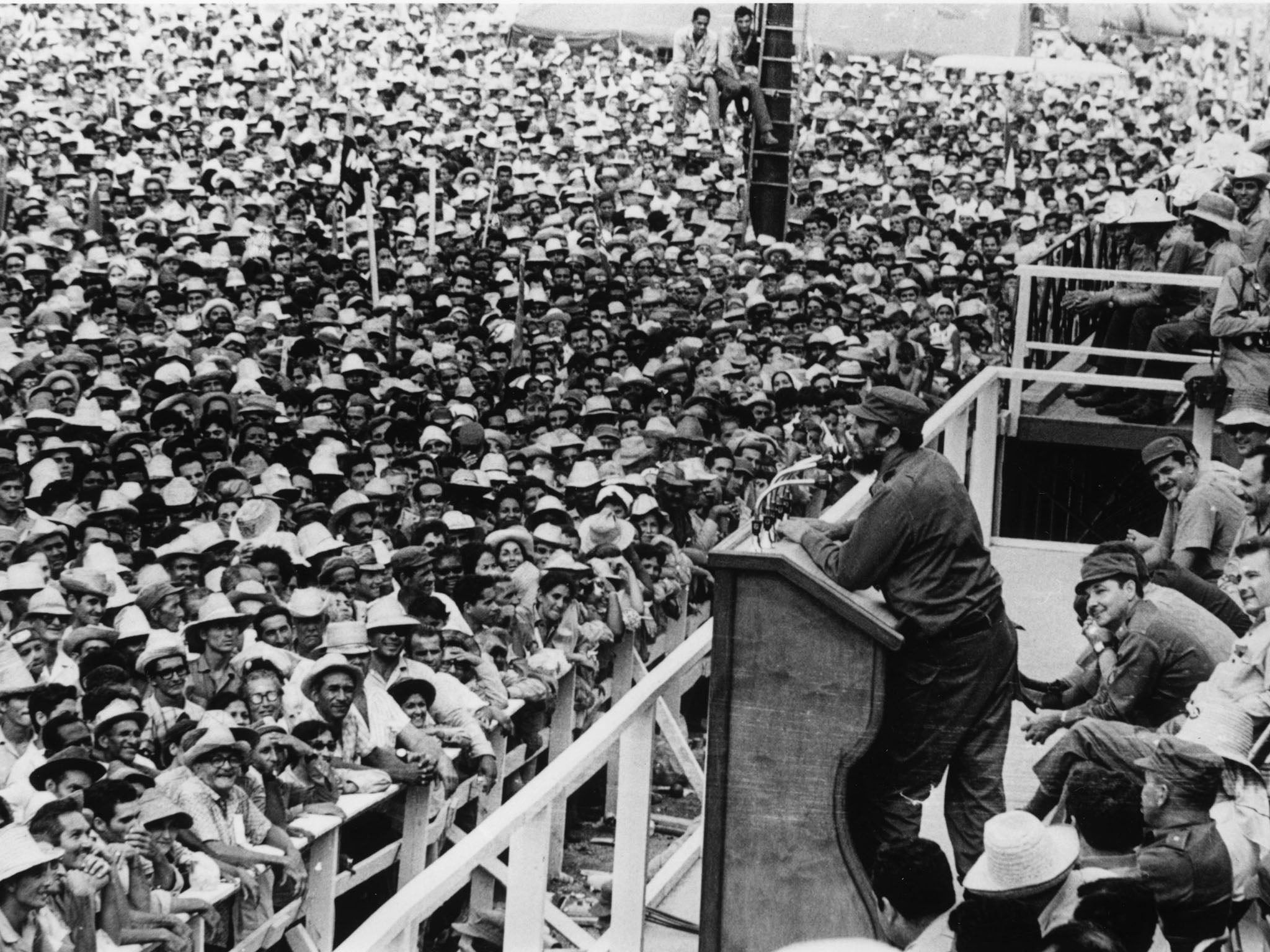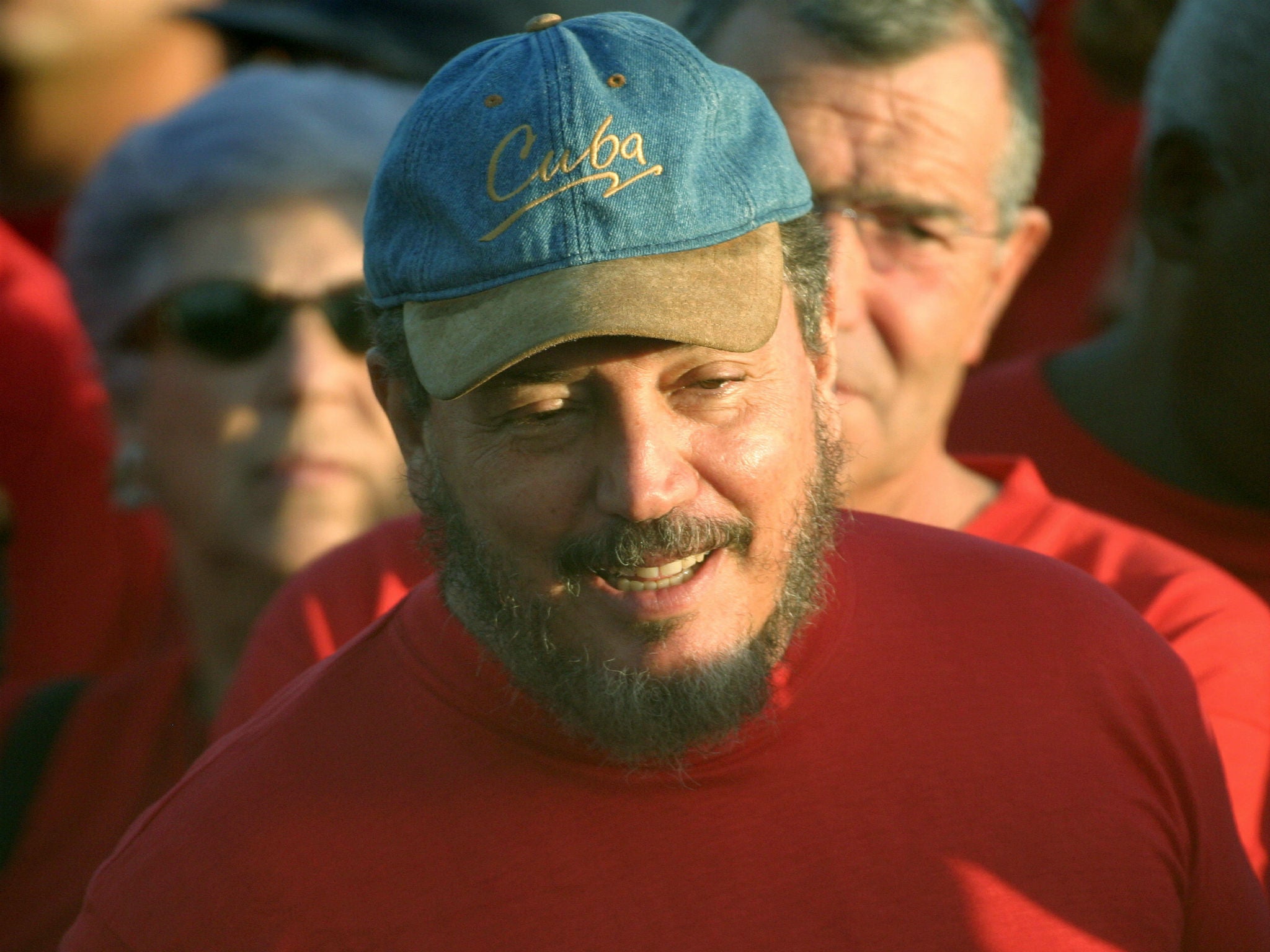Fidel Castro Jr: How ‘Fidelito’ could not escape living – and dying – in his father’s shadow
He tried to be his own man, but with that name, the odds were stacked against him. Phil Davison on the figure all Cubans came to know as ‘Little Fidel’

Being born in Cuba with the name Fidel Castro, to a dad who would go on to face down 10 US presidents, was never going to be easy. The fact that Fidelito (Little Fidel) strongly resembled his father, although a bit more plump of cheek, could not have helped him find his own identity. Whatever the reason, Fidel Castro Jr, a Soviet-trained nuclear physicist who later became close to Russian President Vladimir Putin, reportedly killed himself in Havana on 1 February while being treated for clinical depression.
Whenever Cuba, Fidel Sr and his brother Raul, the current leader, are concerned, conspiracy theories are sure to abound. The famous Fidel died in late 2016. His younger brother is due to relinquish power in April.
Fidelito’s death means the more than six-decade era of the Castro name is about to end, to the delight of the Castro family’s opponents, both on the Caribbean island and off – notably in Miami, where there is a large and politically-influential (in US elections) Cuban exile community.

In the case of Fidelito’s death, however, conspiracy theories were few. Doctors and family members, both in Cuba and in Miami, confirmed he had been severely depressed, having lived his life in the shadow of a man of the same name.
Fidel Angel Castro Diaz-Balart, known from his childhood as Fidelito, was born on 1 September 1949 to Fidel Alejandro Castro Ruz, son of an immigrant from Galicia, Spain, and Mirta Diaz-Balart, whose family was closely linked with the Batista dictatorship of the time. Fidel Sr and Mirta met while he was a law student at the University of Havana, along with her brother Rafael Diaz-Balart, and they married in October 1948. But Fidel Sr had other things on his mind, like revolution, and so Fidelito was pretty much brought up by his mother while his father lived clandestinely, latterly on a farm. Fidelito was only three years old when it emerged that his dad had led a 26 July 1953 guerrilla attack on the Moncada army barracks in Santiago de Cuba in the east of the island. Although the attack failed and Castro spent a year and a half in jail, that date was later seen as the effective start of the revolution which succeeded more than five years later.
But that date also started something of a living hell for Fidelito, who had to change names and boarding schools many times. His parents divorced, his mother remarried and Fidel Sr had shown little interest in the shy boy until the former was in jail for the Moncada attack. From his prison cell, however, he fought for custody of his son. “To take this child away from me ... they would have to kill me. I lose my head when I think about these things ... One day I’ll be out of here and I’ll get my son and my honour back – even if the earth should be destroyed in the process. If they think they can wear me down and that I’ll give up the fight, they’re going to find out that I am prepared to re-enact the famous Hundred Years’ War. And I shall win it.”

At the time, Fidelito was living happily with his mother and stepfather, the lawyer Emilio Nunez Blanco, at Tarara Beach, east of Havana. With two young daughters, the couple would later move to Madrid to start a new life. Fidel would not let her take Fidelito but the boy kept in touch with her by phone from Havana to Madrid. (When she returned to Cuba as an elderly lady a few years ago, reportedly invited by an ailing Castro, Fidelito looked after her).
On his release in 1955, Castro moved to Mexico to plot not only a revolution against the dictatorship but to get back his son. Telling Mirta he was about to embark on a mission in which he might die, he tricked her into letting Fidelito visit him in Mexico but did not return him after two weeks as promised. When he, his brother Raul, his new comrade the Argentinian doctor Ernesto “Che” Guevara and fellow rebels sailed from Mexico to Cuba to launch the revolution, he left his son, then nine years old, in the care of a wealthy Mexican family.
As a mother, however, Mirta had her own revolutionary streak. She hired three professional kidnappers to get him back, cutting off a car in Mexico City’s Chapultepec park, and later taking the boy to the United States where members of her Diaz-Balart family were to become leading Republican politicians in Florida, still influential and fiercely anti-Castro to this day. Fidelito went to school in Queens, New York, for a year. Once Castro and his men were pushing back Batista’s armed forces in Cuba, however, he launched a successful legal battle to get the boy back to Havana where he would stay for the rest of his life, something of a prisoner in his own country although he was allowed to leave for the Soviet Union and elsewhere once he had become a nuclear physicist.
In February 1959, a month after he drove into Havana in triumph as Cuba’s new leader, Castro and Fidelito appeared in a US TV interview in Havana with the great broadcaster Ed Murrow, the boy clutching a puppy and speaking English like an all-American schoolboy. Apart from Spanish and English, he became fluent in Russian and French.

Castro would later send his son to the Soviet Union, where he studied as a physicist, married a Russian and became indoctrinated – as his father had intended – as a communist, much to his mother’s chagrin. He got a doctorate in science at the Institute of Atomic Energy in Moscow. Back in Havana, he gained a further doctorate in science from Havana’s Superior Institute of Sciences and Nuclear Technology.
He became executive secretary of the Commission of Atomic Energy of Cuba, eventually responsible for Cuba’s nuclear policies during the 1980s. That put him in charge of a £1.2bn project, based on Soviet technology, for a four-reactor nuclear energy centre in Juragua but the collapse of the Soviet Union killed off the project, and perhaps Fidelito’s career. It was in July 1992 that his father sacked him for “incompetence” and even put him under house arrest for a time. But Fidelito’s friends said his father was blaming him for something outside of his control. Some, mostly in Miami, said he had been corrupt, perhaps personally gaining $6m from the project, but his friends and family refuted this and it was never proved.
His firing by his father, out of the blue but very publicly, was clearly aimed at embarrassing him, but why? Perhaps Castro was telling the world that he would not be looking to his son as his successor. The Comandante, when his illness got more serious, eventually handed over power to his younger brother Raul
By most accounts, Fidel Castro Jr was a decent man and “a doting father”. He died, almost inevitably, in the same shadow in which he had been born – the shadow of his father. He tried to live his own life, but with that name, the odds were stacked against him. In a way, he was a victim of how the Cuban revolution has split families for almost 60 years, not unlike how the American Civil War split Americans. Most of those who fled the island after the revolution live in Miami. And most of these would love to go back if Cuba ever becomes a democracy. Even if it does, the 60-year split will take time to heal.
Whatever happens, the two Fidel Castros will never see it.
Join our commenting forum
Join thought-provoking conversations, follow other Independent readers and see their replies
Comments
Bookmark popover
Removed from bookmarks